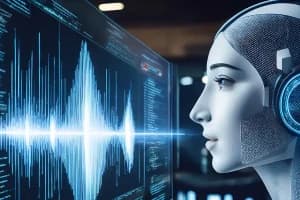Using common graphics including charts, infographics & plots, and representing data through it is known as data visualization. It helps people to understand complex data in a simple way. Data visualization is split into two types one is static and another is interactive visualization. It's very easy in data visualization to convert complex any size data large or small into processed and easy for human beings. But it is also necessary to start this process using clean data sets from a good source and picked the correct chart so that the data is ready to be visualized.
For getting more ideas and explanations here is a list of Data Visualization Books from which people can acquire more knowledge in this field.
This book has more than hundreds of ideas for helping those who are interested in this field(e. g programmers, scientists, data analytics). For individual problems, there are individual solutions that will also help to apply those in own's project and have a discussion on how it will work and for which purpose.
In this second edition there is some easier way to make graphs in R. With your basic idea of R language you can use this cookbook for:
Exploring data rapidly
Helping viewers to interpret data
Distributing the summarized data using plots, curves
Creating various graphs, plots
This book will help to know how raw data can be turned into insight and understood using R language. Readers don't need to have any programming language if they want to learn R for data science in a short time. Through this book, authors have guided the readers through the steps to explore, model the data. It will provide a better understanding of data science and the tools to process data.
This book will help you to learn:
Giving datasets a newly perfect shape for analysis.
Tools to use solving problems with great clarity with R.
Evaluation of data to quickly test them.
This book is a great combination of JavaScript and Python to transform raw data into effective visualization. The author has taught through this guide how to use the libraries like D3, Pandas, MLib for building a visualization of data. For people who are interested to learn JavaScript r Python and want to create their self web-based data visualization then this book is one of the appropriate choices.
Through this book you will also help you to acquire knowledge about data manipulation with python, similarities between python and JavaScript, using Python's framework to make restful APIs.
It will help you to learn:
- Data manipulation with Python.
- The similarities between Python &JavaScript.
- How to explore data with proper cleanliness using Python's Pandas, Matplotlib & Numpy libraries.
- How to extract information using Python's web-scraping tools.
If you are interested to learn from the ABC of Python for data visualization then this book can assist you to the appropriate path. Though data science and data visualization aren't in the same section there is a correlation between them. Data visualization needs some processed data to present it for visualizing and data science helps to extract and explore data so that the complexity comes to the reduction. Data visualization is able to discover the significant data by making graphs, plots, and tables which is useful to identify the necessary patterns.
You will learn:
- Python for plotting with Matplotlib, Pandas for Data Visualization.
- Introductory knowledge of Python Seaborn Library.
- Introduction to 3D plotting with Matplotlib.
For the academic purposes of the tools which are chosen, the R language is deeply spreading worldwide, especially in the private sector. R has the power to express data in a short time and in an easier way. It also finds out the base of applied statistics and solutions of working with "messy data", "large data". For people who are willing to build up their career as a data analyst this book is suitable for them:
You will learn from this book:
Navigation of the R's Environment.
Elaboration and visualization of data and relationship between them
For estimation parameter learning Bayesian Methods
For the prediction of categorical data apply powerful methods.
Nowadays one of the necessary skills in data analysis in various positions. By this, individuals can know how to extract data and generate values. This book will help you to learn the process of analyzing data and working effectively with python libraries and also about data science e. g NumPy, MLib, seaborn. It will also help in learning calculation of summary strategy and visualization of finding data patterns.
With the help of this book, you will be skillful with visualizing data, decision making, and analysis among multiple datasets.
Also, you will learn:
Sound knowledge of how scientists and data analysts collect data and work on it.
Gathering data from different sources and making combination in it.
To solve real-world datasets using python libraries.
To generate re-usable code building python packages, modules.
It's a colorful guide that would not only give you the knowledge of being a reader but also through colors you will experience the actual scenarios. Data visualization helps an organization to get its desired data when it's needed. Because every type of company needs to analyze datasets so that they can get the flow to be updated.
For synthesizing data it is important to analyze it in the right way so that it can be presented as a mirror of a story to the audience of datasets, especially in big data.
This colorful guide will help you to do slicing data if different views, break complex data into a simple form so that it can be eligible to communicate.
This book plays the role of the demo in converting data into eye-catching visualization.
It is a perfect tool for transforming tables and charts in a visualization mode.
In this universe data is the thing which never decreases, it always increases. But all-time having data as a paragraph or in alphabets isn't interesting. But if it is presented in colorful visualization then it can be more understandable. So the author of the book named "Visualize This" came with a full-color book where step-by-step processes are shown how data can visualize and data can turn into stories.
This book will help you to learn:
How to tell stories with data along with proper visualization.
Tips with necessary steps for making graphical maps, statistical graphics to find out the meanings in numbers.
Design tools for R, Python & graphics.
Necessary steps descriptions of patterns for data visualization.
This book is used as an example and model of data visualization theory and practical parts to the students and researchers. While others are failed to explain here this book has explained the graphs successfully.
By the working examples, this book is showed how to do plots step by step, top to bottom of simple variables and complex graphics. For a better understanding of data sets, it is essential to have effective graphs. This book gives real-life applicable skills to the students.
You will learn:
Creating plots piece by piece.
How the data analysis tools "tidyverse" help to work with R with consistency.
How to get high-quality figures by using data effectively.
Communicating with large and complex datasets the best way is using effective visualization. By operating an array for visualization options and choices nowadays analysts, scientists, engineers are increasing the power of software visualization. This book will teach you the critical points of data visualization.
You'll learn:
The concept of using color as a tool to highlight or represent values.
Multiple ways to ensure provided keys.
Graphical guidelines for using types of data visualization.
Pros and cons of figures are low or high-quality diagrams.

















